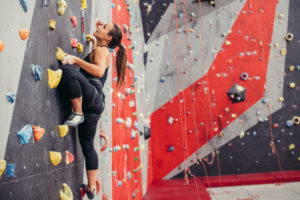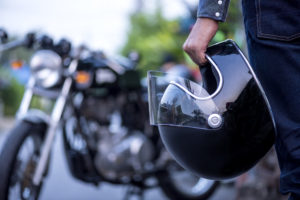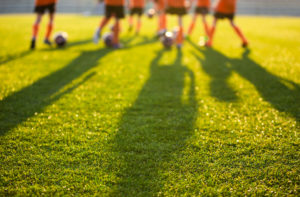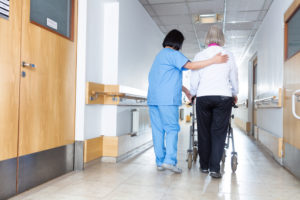Fall is transitioning to winter and we will be spending more time inside our homes. That means we should be focusing on ways to keep the home safe. There are some general tips we should all consider and some specific tips for the holiday season.
Cold weather requires heat in the home. Different heat sources bring different safety hazards that we should guard against.
- Any heat source that uses fuel to generate heat creates carbon monoxide as a byproduct. Carbon monoxide is the silent killer because you cannot see it, smell it, hear it or taste it, and hundreds of people die each year as a result of carbon monoxide poisoning. A carbon monoxide detector should be installed in or near every sleeping area in the home. They are expensive, there is no doubt about it, but the cost is a small price to pay to keep family members safe. Also, have your fuel burning heat sources inspected periodically. Finally, never use the oven, grills or generators as heat sources in the home.
- If you have space heaters, be sure to look for stickers that indicate they have been safety tested. Give space heaters plenty of room, at least three feet from anything flammable. Always make sure that space heaters are safe from children and pets. Finally, never leave space heaters on when you leave the home or are sleeping.
- Be prepared for power outages. When the power goes out not only are you in the dark, you are without heat. If you have a non-power driven heat source, such as a fireplace, use it as a heat source but pay careful attention to such sources at all times. Move perishable food outside to keep them safe longer and run water at various faucets to keep pipes from freezing. Finally, make sure you have flashlights, lanterns, warm clothing, portable radios and cell phones on hand.
- Wood stoves and fireplaces should be inspected routinely by qualified professionals who can spot any cracks or flammable build-up in chimneys. Burn clean fuels after flues are opened and make sure that proper screens are in place. And, of course, have properly operating smoke detectors in all sleeping areas and on all levels of your house.
In addition to the general safety considerations that come with cold weather, winter ushers in the holiday season. A Home Safety Council survey found that 53 percent of the families surveyed said they plan to hang holiday lights, 40 percent will decorate outdoors and almost one-third (29 percent) will decorate with candles. Accordingly, the Council has focused on three major safety areas for the holiday season:
Candle Safety
While candles provide a warm and festive atmosphere, research shows home fires caused by candles peak during the holiday season, with the highest number of candle fires occurring on Christmas Day, followed by New Year’s Day and Christmas Eve.* This year candle safety tops the Home Safety Council’s list of holiday safety tips:
- Make sure an adult is in the room and paying attention whenever you light a candle. Blow out all candles before going to sleep or leaving the room.
- Do not permit children to keep or use candles or incense in their rooms. Candles should only be used when a sober adult is present and awake.
- Never use lighted candles on or near a Christmas tree or other evergreens.
- Keep candles at least three feet away from anything that can burn, including other decorations and wrapping paper.
- Always use stable, nonflammable candle holders with a hurricane glass to protect the open flame.
- Place candles where they will not be knocked down or blown over and out of reach of pets and young children.
- If you have children in your home, store candles, matches and lighters out of their sight and reach in a locked cabinet.
- To eliminate the risk of an open candle flame, use battery-powered candles whenever possible, especially when you combine candles with greenery or other decorations.
Holiday Electrical Safety
Holiday lights and electrical decorations create holiday cheer both inside and outside the home, but they can also create fire hazards and electrical shock risks if they are not handled properly. The Home Safety Council recommends taking the following electrical safety precautions while decorating your home this year:
- Inspect holiday lights and extension cords before decorating. Replace any that are fraying or damaged. Pay special attention to lights, cords or decorations that may have been damaged from winter weather conditions.
- Check for red or green UL marks on all light strings and extension cords. The green holographic UL Mark means the light strings should be used only indoors. The red holographic UL Mark indicates the light strings can be used both inside and out — and can withstand conditions related to outdoor use.
- Follow manufacturer’s guidelines for stringing light sets together. As a general rule, UL recommends using no more than three standard-size sets of lights together.
- Hang or mount light strands carefully to avoid damaging the cord’s insulation.
- Do not overload extension cords or electrical receptacles.
- Unplug all holiday lights when you go to sleep or leave home.
- Plug outdoor decorations into outlets protected by Ground Fault Circuit Interrupters (GFCIs) to prevent shock.
- Automatic lighting timers can be used to ensure that lights are not left on. These are available for both indoor and outdoor use.
- Roll up excess electrical cords and keep them away from high traffic areas. Do not run electrical cords under rugs.
- Never keep an extension cord plugged in when it is not in use.
- When replacing a light bulb, be sure to use the correct bulb size (wattage) that is right for the fixture.
- Use safety caps to keep children from putting things into electrical receptacles outlets.
Ladder Safety
Falls are by far the leading cause of home injury fatalities. The safest way to climb indoors and out is to use a safe and sturdy ladder. Follow the Home Safety Council’s ladder safety tips when using a ladder to decorate the tree, retrieve stored decorations or hang holiday lights:
- Always use a sturdy ladder when climbing, it’s too risky to climb on a chair.
- Before using a ladder outdoors, choose a location that is well away from all power lines. Coming in contact with live wires can be fatal.
- Place the ladder on level ground and open it completely, making sure all locks are engaged.
- Use the 4-to-1 rule for extension ladders: for each 4 feet of distance between the ground and the upper point of contact (such as the wall or roof), move the base of the ladder out 1 foot.
- Always face the ladder when climbing and wear slip-resistant shoes, such as those with rubber soles.
- Keep your body centered on the ladder and gauge your safety by your belt buckle. If your buckle passes beyond the ladder rail, you are overreaching and at risk for falling.
- Make sure rungs are dry before using the ladder.
- Stand at or below the highest safe standing level on a ladder. For a stepladder, the safe standing level is the second rung from the top, and for an extension ladder, it’s the fourth rung from the top.
Finally, garage usage is higher during the cold months so it is important to make safety in those areas a priority. Carbon monoxide can be a big issue because some appliances, such as water heaters, are commonly located in garages. Also, there is the obvious; the carbon monoxide generated by running vehicles. Never idle or warm up your vehicle inside a garage and make sure your garage meets all building codes when it comes to ventilation.
Fire is also a common garage danger. Many people keep flammable substances in their garages, which is fine if they are properly stored in sealed containers and are out of reach for children. Also, to avoid fires caused by spontaneous combustion, do not allow debris or rag piles to accumulate. In short, a clean and well organized garage is a safer garage.
The seasons change like clockwork and it is easy to become complacent as the days pass from summer through fall to winter. We all need a reminder to spend some time and effort on keeping everyone safe around the home. This is your reminder.

Bret Hanna of Wrona DuBois in Utah, focuses exclusively on litigating plaintiffs’ medical malpractice and catastrophic personal injury cases. He has represented clients in state and federal courts, in mediations, and in administrative proceedings in Michigan and Utah since 1991.











Comments for this article are closed.